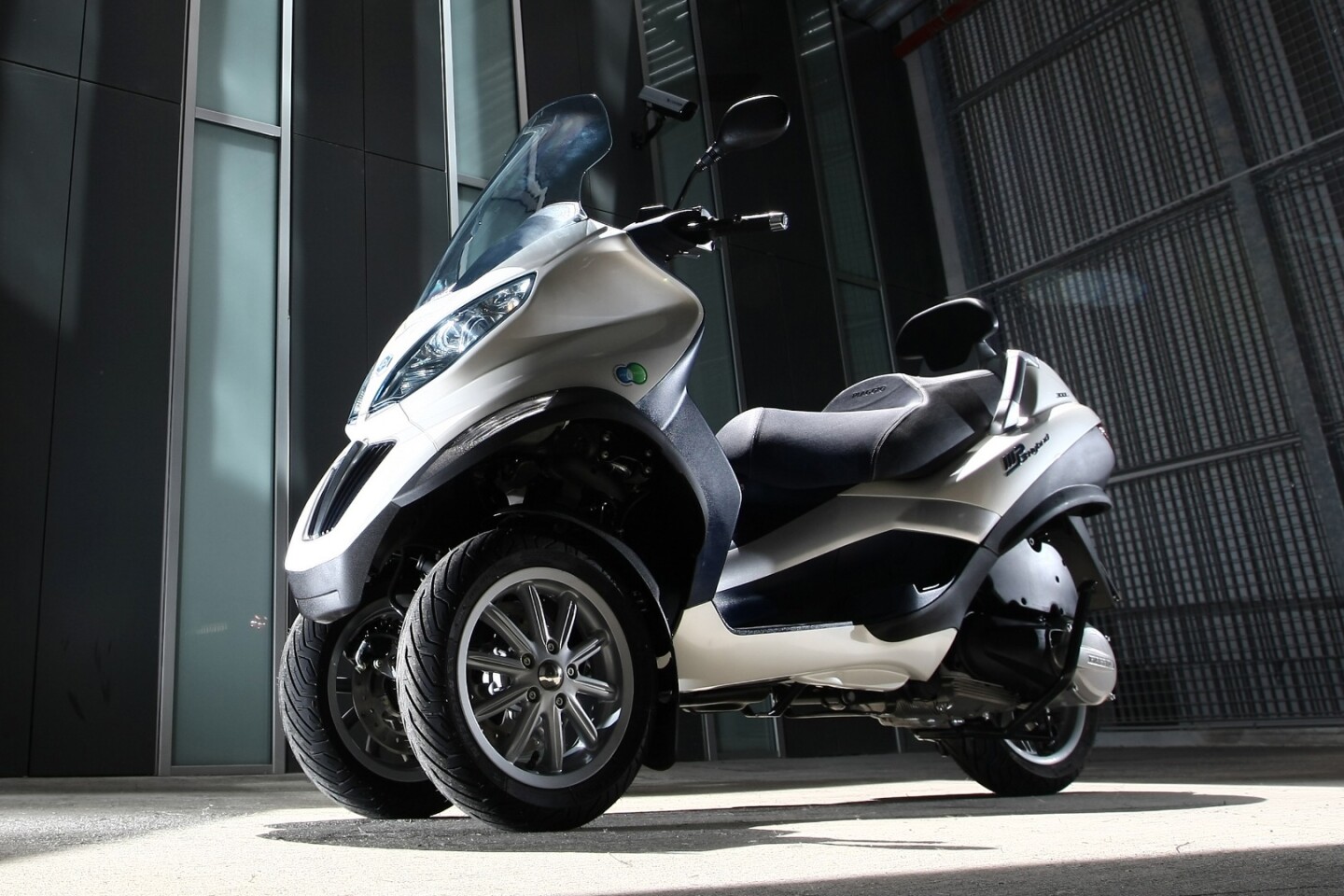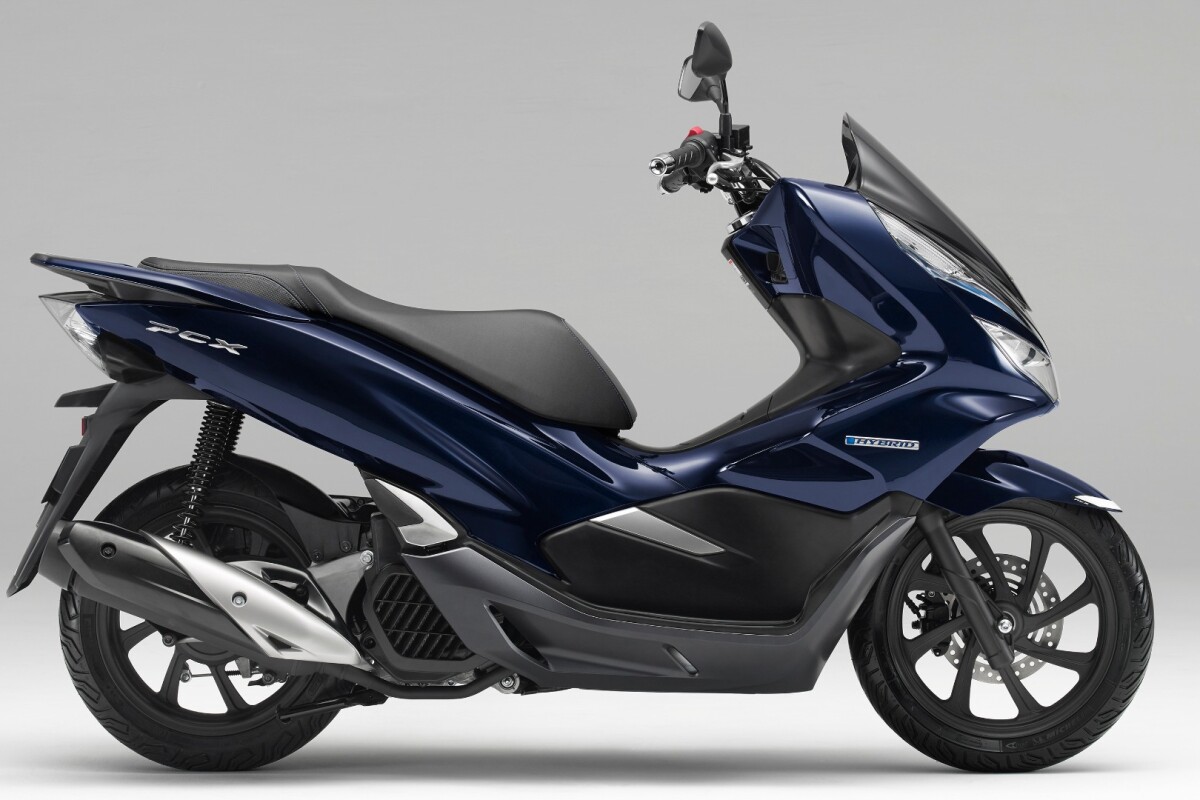It shouldn't come as a surprise that Honda has announced production of the PCX Hybrid it showed at the 45th Tokyo Motor Show (TMS) last October, but it is. Honda often turns TMS concepts into production vehicles within a year if the public response is positive.
Unlike hybrid cars though, particularly hybrid sports cars, hybrid motorcycles have been met by an unusually tepid response from the motorcycle industry of developed countries.
It is a vastly different environment in the world's most populous developing nations though, where scooters are the family car. Scooters are cheap to buy, handle better than motorcycles at city speeds, stop quicker, use less gas, and they get everywhere just as quick as a motorcycle. The vast majority of the two wheeled vehicles on the world's roads are scooters, despite their near absence from American roads.

Hybrid motorcycles have been on the agenda of the world's leading motorcycle manufacturers for more than a decade, but very little has been achieved. That was another pointer to the Tokyo Motor Show PCX Hybrid being a no-show, at least for a very long time.
The first hybrid motorcycle we saw was at Tokyo 13 years ago when Yamaha displayed the Gen Ryu (above top left) at Tokyo in 2005. Patents were applied for, and there was some serious talk about releasing the bike in 2009, but nothing more eventuated, though there were some further technological developments displayed behind glass cases on the Yamaha stand in 2009. Yamaha apparently shelved the project near completion thanks to the Global Financial Crisis.
Honda's only hybrid motorcycle concept to be shown at the Tokyo Motor Show was the tilting three-wheeler NeoWing of 2015. Based loosely on the Gold Wing with at least two additional electric motors added to the drive train, it too didn't appear again. At top right and bottom left are two recent hybrid concepts shown by French company Furion, and Indian company TVS, with the latter using a similar drive train to the Honda PCX Hybrid, and the Furion based around a twin Wankel engine with some serious innovation thrown in.

Piaggio managed to get a hybrid version of its three-wheeled scooter into production in 2010, but it cost so much that it didn't sell, wasn't even exported to most countries, and was soon dropped from the range.
Honda, Yamaha, Kawasaki and Suzuki have all been lodging patent applications for a decade relating to hybrid technology for motorcycles, but motorcycles get great fuel consumption and offer low emissions anyway. Why make them more complex and expensive?
Honda may well answer that question very soon.

Honda's announcement today that it would begin sales of the PCX Hybrid in Japan on September 14, means it will offer the world's first mass-produced motorized scooter equipped with a hybrid drive train. It's not much different from the bike shown at Honda's press conference in Tokyo on October 25, 2017, in fact it is identical. Honda actually handed out exactly the same photograph in today's press kit as it did nine months ago. That's it above.
The PCX Hybrid is based on the latest model PCX released earlier this year, and the primary advantages of the electric drivetrain assist are claimed to be sharper throttle response, increased power and still better fuel economy.

The energy is stored in a new 48 V high-output lithium ion battery, and the additional drive assist torque is generated by the ACG starter motor – the same motor that starts the engine also assists it.
There will be two motor assist modes available to the rider, one offering economical fuel consumption, the other providing more power.
Pricing
The price of the new PCX Hybrid in Japan will be ¥432,000 (US$3,905 at today's exchange rate), compared to ¥342,360 ($3,095) for the standard PCX 125, ¥373,680 ($3,378) for the PCX 150 and ¥395,280 ($3,573) for the PCX 150 with ABS.
So the PCX Hybrid is $810 (26 percent) more expensive than the PCX 125 it is based on.
It is also $527 (15.6 percent) more expensive than the PCX 150, and costs $332 (9.3 percent) more than the PCX 150 ABS.
Power
The maximum power of the PCX 125 is 9.0 kW with maximum torque of 12 Nm at 5,000 rpm.
The maximum power of the PCX 150 is 11.0 kW with maximum torque of 14 Nm at 6,500 rpm.
The maximum power of the PCX Hybrid is 10.4 kW (9.0 from the internal combustion engine and 1.4 kW from the electric motor) with maximum torque of 14 Nm at 6,500 rpm coming from the gas burner and 4.3 Nm delivered at 3,000 rpm by the electric motor.
That means that in the real world, the Hybrid is going to be stronger through the mid-range than the PCX 150, but it won't have quite the same top speed.
Fuel Economy
Honda's PCX always delivers astonishingly good fuel economy and from my extensive experience hiring scooters across Asia, the diminutive fuel-injected Honda single always delivers much better fuel consumption than the equivalent machinery from any other scooter manufacturer in the real world. If I get a choice, I will always choose a Honda over another hire bike. Hence, as soon as the press release hit, I couldn't wait to see what the consumption claims were.
Sadly, judging by the specs that have been issued, it isn't that much.
The PCX Hybrid is claimed to deliver 51.9 km/l (122.1 mpg in US gallons), while the Honda claim for the PCX 125 is 50.7 km/l (119.3 mpg in US gal), and for the PCX 150 it is 46.0 km/l (108.2 mpg in US gal).
That means that apart from the warm feeling you get for being a responsible global citizen, on face value there's not a lot of incentive for buying a PCX Hybrid in comparison to the existing PCX range.
Comparing a PCX 125 to a PCX (also 125) Hybrid, the hybrid costs $810 more, and delivers 2.37 percent better fuel consumption. The return on investment is going to require considerable usage at those rates.
By my calculations, you'll need to do 174,000 miles on your Honda PCX Hybrid to get your money back through fuel cost savings compared to a PCX 150, and 1.45 million miles on the Hybrid to get your money back compared to buying the standard PCX 125.
That may be why Honda's projected domestic annual sales in the first year is set at 2,000 units.
In Conclusion
Based on the numbers above, the Honda PCX Hybrid may not look like a particularly compelling proposition, but neither was the Honda Insight hybrid when it was introduced in 1999. You were never going to get back based on the high initial price of the Insight in fuel savings alone. It was however, a delight to drive, and no doubt the PCX Hybrid will also offer a special feel. Honda always gets it right with the first iteration of what will be a landmark model.
This is the beginning, and while you may not get back your money, one day the first 2,000 hybrid motorcycles might help with that ROI if you're prepared to hang onto them for a few decades and sell them at auction, because it is a landmark event regardless.
Source: Honda




















